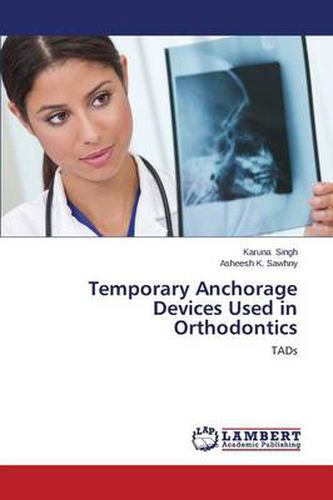Readings Newsletter
Become a Readings Member to make your shopping experience even easier.
Sign in or sign up for free!
You’re not far away from qualifying for FREE standard shipping within Australia
You’ve qualified for FREE standard shipping within Australia
The cart is loading…






This title is printed to order. This book may have been self-published. If so, we cannot guarantee the quality of the content. In the main most books will have gone through the editing process however some may not. We therefore suggest that you be aware of this before ordering this book. If in doubt check either the author or publisher’s details as we are unable to accept any returns unless they are faulty. Please contact us if you have any questions.
The practice of clinical orthodontics is largely dependent on the availability of anchorage. Anchorage, by definition, is a body’s resistance to displacement. An important aspect of treatment is maximizing the toot movement that is desired, while minimizing undesirable side effects. There are numerous ways in which orthodontist has tried to augment anchorage, including auxiliary devices such as headgear, transpalatal arches, and other appliances. Many of these appliances are awkward or uncomfortable for patients, often leading to less than desired levels of compliance. Thus, treatment outcome can become compromised. Over the past 60 years methods have been developed to create absolute anchorage with the help of what are known as Temporary Anchorage Devices (TADs) and thus widen the scope of orthodontics.TADs are temporarily fixed to bone for the purpose of enhancing orthodontic anchorage either by supporting the teeth of the reactive unit or by obviating the need for the reactive unit altogether, and which is subsequently removed after use.
$9.00 standard shipping within Australia
FREE standard shipping within Australia for orders over $100.00
Express & International shipping calculated at checkout
This title is printed to order. This book may have been self-published. If so, we cannot guarantee the quality of the content. In the main most books will have gone through the editing process however some may not. We therefore suggest that you be aware of this before ordering this book. If in doubt check either the author or publisher’s details as we are unable to accept any returns unless they are faulty. Please contact us if you have any questions.
The practice of clinical orthodontics is largely dependent on the availability of anchorage. Anchorage, by definition, is a body’s resistance to displacement. An important aspect of treatment is maximizing the toot movement that is desired, while minimizing undesirable side effects. There are numerous ways in which orthodontist has tried to augment anchorage, including auxiliary devices such as headgear, transpalatal arches, and other appliances. Many of these appliances are awkward or uncomfortable for patients, often leading to less than desired levels of compliance. Thus, treatment outcome can become compromised. Over the past 60 years methods have been developed to create absolute anchorage with the help of what are known as Temporary Anchorage Devices (TADs) and thus widen the scope of orthodontics.TADs are temporarily fixed to bone for the purpose of enhancing orthodontic anchorage either by supporting the teeth of the reactive unit or by obviating the need for the reactive unit altogether, and which is subsequently removed after use.